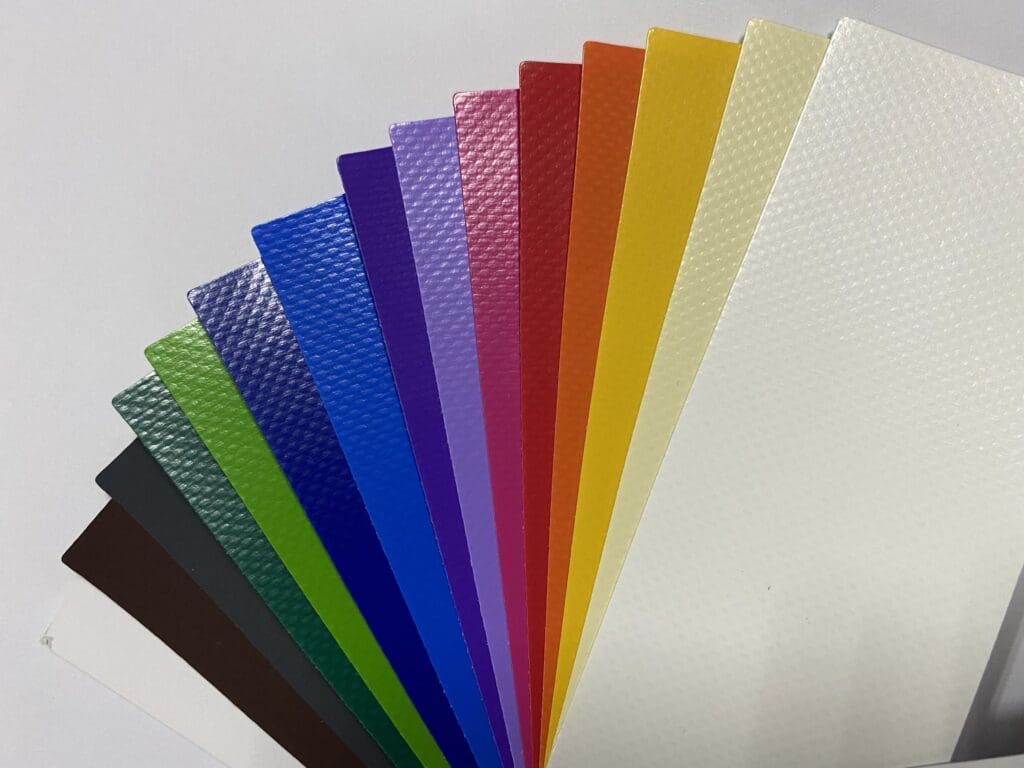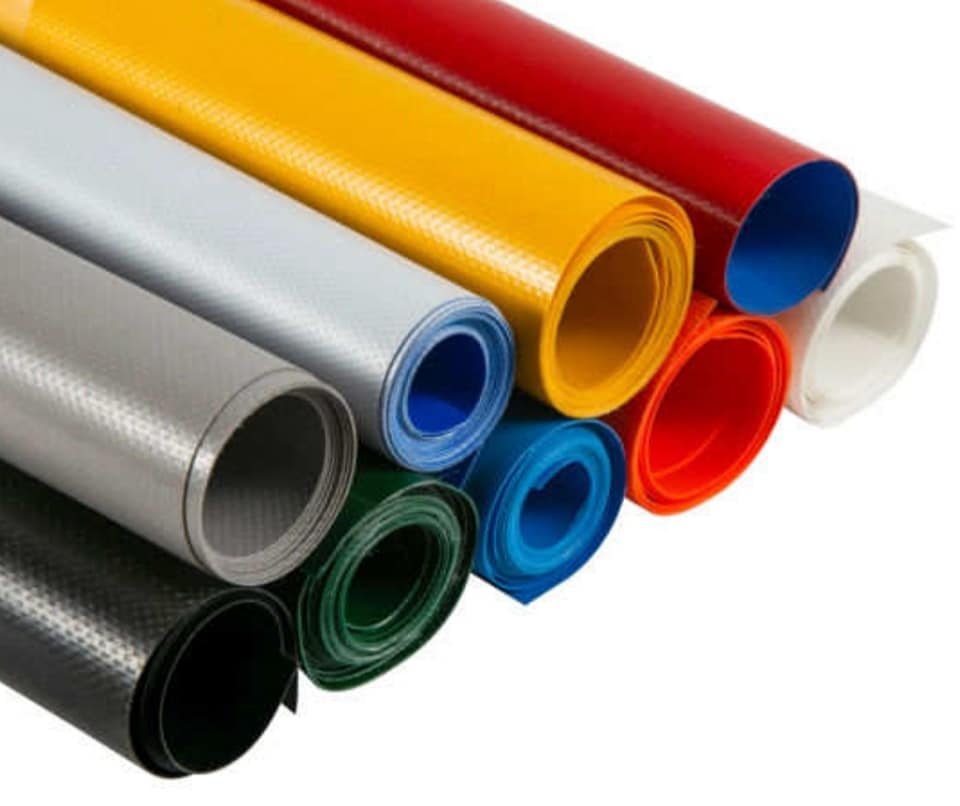
Understanding the Versatility and Applications of PVC Tarpaulin
PVC (Polyvinyl Chloride) tarpaulin is a versatile and durable material widely used in various industries for its exceptional strength, flexibility, and resistance to different environmental conditions. Ytarp.com will delve into the properties, manufacturing process, and the myriad applications of PVC tarpaulin.
Properties of PVC Tarpaulin
Durability and Strength
PVC tarpaulin is recognized for its impressive tensile strength, providing resistance against tears and punctures. Its robustness guarantees an extended lifespan in comparison to alternative tarpaulin materials.
Waterproof and Weather Resistance:
The natural waterproof properties of PVC make it a perfect option for situations where safeguarding against moisture is essential.
PVC tarpaulin exhibits excellent weather resistance, making it suitable for outdoor use in diverse climates.
UV Resistance
PVC tarpaulin is often treated to be UV resistant, preventing degradation and color fading when exposed to sunlight over extended periods.
Flexibility and Ease of Handling
Despite its robustness, PVC tarpaulin remains flexible, allowing for easy handling and installation.
Its pliability makes it adaptable to various shapes and structures.
Manufacturing Process of PVC Tarpaulin

Manufacturing Process of PVC Tarpaulin
Raw Materials
The manufacturing journey of PVC tarpaulin begins with a careful selection of key components that collectively contribute to its exceptional properties. The primary raw materials include PVC resin, plasticizers, stabilizers, and pigments.
PVC Resin: Polyvinyl Chloride resin forms the base of PVC tarpaulin. It imparts the material with its innate strength and lasting resilience. The PVC resin originates from the polymerization of vinyl chloride monomers, yielding a flexible and sturdy thermoplastic.
Plasticizers: To enhance flexibility and workability, plasticizers are introduced to the PVC resin. These additives modify the molecular structure of the resin, allowing the tarpaulin to remain pliable and adaptable even in varying temperatures.
Stabilizers: Stabilizers are crucial for maintaining the structural integrity of PVC tarpaulin during processing and throughout its lifespan. They safeguard the substance from deterioration triggered by heat, illumination, and external environmental elements.
Pigments: Pigments contribute to the aesthetic appeal of PVC tarpaulin by providing color. Additionally, pigments may have UV-resistant properties, preventing color fading and ensuring a prolonged lifespan.
Extrusion Process
The PVC tarpaulin manufacturer process advances with the extrusion of PVC sheets, which serve as the fundamental form of the material.
Mixing and Formulation: The PVC resin, plasticizers, stabilizers, and pigments are meticulously mixed in precise ratios to form a homogeneous compound. This compound is then fed into an extruder.
Extrusion: Inside the extruder, the mixture undergoes elevated temperatures and pressure, leading to its liquefaction and the creation of a uniform molten mass. This molten mass is then forced through a die, resulting in a continuous sheet of PVC material.
Cooling and Sizing: The extruded PVC sheet is rapidly cooled to solidify its structure. Subsequent sizing processes ensure uniform thickness and width, creating sheets that are ready for further processing.

Calendering and Lamination
Following extrusion, the PVC sheets undergo calendering and lamination processes to enhance their strength, thickness, and overall quality.
Calendaring: In this phase, the extruded sheets pass through multiple calender rolls, which exert pressure to refine the thickness and surface texture. Calendering imparts a smooth finish and ensures uniform thickness across the PVC tarpaulin.
Lamination: Lamination involves bonding multiple layers together, further reinforcing the material. Additional layers may be added for specific purposes, such as improving tear resistance or enhancing UV protection. This process contributes significantly to the overall durability of the PVC tarpaulin.
Coating Techniques
Coating techniques play a pivotal role in tailoring the characteristics of PVC tarpaulin to meet diverse application requirements. Two common coating methods are knife-over-roll and dip coating.
Knife-Over-Roll Coating: In this method, the PVC sheet passes over a rotating cylinder, and a knife-like apparatus evenly spreads the coating material. This specific software guarantees uniform coverage, rendering it appropriate for situations where consistency is crucial.
Dip Coating: Dip coating involves immersing the PVC sheet into a liquid coating solution. The sheet is then lifted, allowing excess coating to drain off. This method is effective for applications where a thicker or more specialized coating is required.
These coating techniques not only provide additional functionalities, such as fire resistance or chemical resistance but also contribute to the overall performance and longevity of PVC tarpaulin in various applications. The careful combination of raw materials, extrusion, calendering, and coating processes results in a PVC tarpaulin product that excels in strength, flexibility, and resistance to environmental factors.
Applications of PVC Tarpaulin
Transportation and Logistics:
Explore how PVC tarpaulin is extensively used in truck and trailer covers, providing protection to goods during transit.
Agriculture and Farming:
Discuss the role of PVC tarpaulin in agriculture, including its use in crop covers, hay storage, and as shelter material for livestock.
Construction Industry:
Highlight the applications of PVC tarpaulin in construction, such as temporary shelters, scaffolding covers, and as weather barriers.
Recreational and Outdoor Use:
Explore how PVC tarpaulin is utilized in camping tents, awnings, and as a waterproof covering for outdoor events.
Environmental Protection:
Discuss the use of PVC tarpaulin in environmental protection measures, such as containment barriers for hazardous materials.

Sustainable Practices in PVC Tarpaulin Production
Recycling Initiatives:
Examine efforts within the industry to recycle and repurpose PVC tarpaulin, reducing environmental impact.
Alternative Materials and Coating Technologies:
Explore emerging trends in using eco-friendly materials and innovative coating technologies to create more sustainable PVC tarpaulin products.
Future Trends and Innovations
Smart Tarpaulins:
Discuss the integration of technology, such as sensors and data collection, into PVC tarpaulins for enhanced functionality and monitoring.
Bio-Based PVC:
Explore developments in bio-based PVC materials as a more environmentally friendly alternative.
Conclusion:
Ytarp.com PVC tarpaulin is an impressive material with diverse applications spanning various industries. Its resilience, adaptability, and ability to withstand different environmental conditions position it as the preferred choice for numerous practical uses. As technology advances and sustainability becomes a more significant concern, the PVC tarpaulin industry is likely to witness further innovations, contributing to a more eco-friendly and versatile future.
Frequently Asked Questions (FAQ) About PVC Tarpaulin
What is PVC Tarpaulin?
PVC tarpaulin is a versatile and durable material made from Polyvinyl Chloride. It is widely used for its strength, flexibility, and resistance to various environmental conditions.
What are the key properties of PVC Tarpaulin?
PVC tarpaulin is known for its durability, high tensile strength, waterproof nature, weather resistance, UV resistance, and flexibility, making it suitable for diverse applications.
How is PVC Tarpaulin manufactured?
The manufacturing process involves using PVC resin, plasticizers, stabilizers, and pigments. It typically includes extrusion, calendering, lamination, and coating processes to enhance its strength and characteristics.
In which industries is PVC Tarpaulin commonly used?
PVC tarpaulin finds applications in transportation and logistics, agriculture, construction, recreational and outdoor use, and environmental protection, among others.







